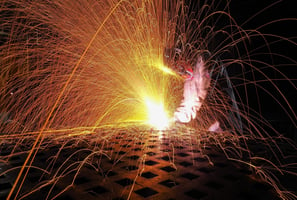"Most CPQ Systems Are Mere Illusions, But Here's Why That's Not Entirely Bad."
From Rules to Reasoning: The New Era of CPQ
For more than two decades, Configuration systems have helped industrial and technology companies translate complex product portfolios into accurate and consistent quotes. These systems are built on structured rule logic that defines which components can be combined, what dependencies apply, and how prices are calculated. Each rule represents a decision captured from engineering or product management, and together they create a digital model of how the company designs, sells, and delivers its products. This structure is what allows CPQ to guarantee precision and compliance across large organizations and international markets.
Yet as products, markets, and business models evolve, rule-based systems often reach a point where maintaining that precision becomes time-consuming. Every new product introduction, pricing update, or market requirement adds another layer of logic that must be tested and validated. Over time, this creates an expanding web of conditions that only a few experts can fully manage. The challenge is not that CPQ is ineffective but that the business environment now changes faster than a purely rule-driven system can adapt. The need for flexibility and understanding has become just as important as the need for correctness.
The Challenge of Maintaining Logic at Scale
Building configuration models is a technical task; maintaining them is a continuous strategic effort. When companies expand product lines, enter new markets, or adapt to regional standards, each change requires updates to configuration rules. These adjustments ripple through hundreds of interdependent features, creating complexity that must be handled carefully to avoid errors. The larger the organization, the greater the coordination required between engineering, product, and sales teams to keep the configuration model aligned with reality.
Across industries such as manufacturing, energy systems, and medical technology, we have observed how the rulebase that once simplified quoting can become difficult to sustain as products diversify. The real pain point is not the number of rules but the distance between those who know the products best and those who maintain the logic. Configuration knowledge becomes trapped in specialized tools and formats that limit collaboration. To move beyond that limitation, configuration systems must not only store logic but also understand and explain it. That is where combining generative AI, RAG, and CPQ changes what is possible.
From Rules to Reasoning
The next generation of configuration technology is built on reasoning. Rules remain essential, but when combined with the capabilities of large language models (LLMs) and Retrieval-Augmented Generation, they become more dynamic and transparent. Symbolic logic defines what is correct; the LLM interprets context and intent; and RAG ensures that every generated response is grounded in real configuration data and documentation. Together, these components form a system that is both flexible and trustworthy.
This approach allows organizations to maintain the control of CPQ while benefiting from the adaptability of AI. Instead of writing new rules for every scenario, teams can describe desired behavior in natural language, and the system translates it into valid logic. When users interact with the configurator, it can explain its reasoning, reference relevant documents, and validate every step against the existing model. The result is not a replacement for CPQ but an evolution that merges rule-based precision with AI-driven understanding.
A New Way to Work With Product Knowledge
Reasoning-based configuration changes how companies manage and share product knowledge. Instead of static documentation or embedded rules hidden in the system, knowledge becomes interactive. Teams can ask the system why an option is restricted, how a component interacts with another, or which configurations meet specific regional standards. The AI retrieves the relevant logic and supporting information, then presents it in clear, contextual language. This transparency accelerates onboarding, reduces miscommunication, and helps decision-makers trust the output.
By integrating CPQ with generative AI and RAG, companies also eliminate data silos between configuration, PIM, and engineering documentation. The AI retrieves information from these connected sources in real time, ensuring that sales and product teams always work from the same, validated knowledge base. This connected approach shortens the gap between design changes and market readiness. Configuration becomes a collaborative process supported by reasoning rather than a maintenance challenge limited to specialists.
Built on CPQ Experience Across Industries
The shift toward AI-driven configuration builds on decades of lessons from real-world CPQ implementations. Industries with complex, configurable products share similar challenges: capturing expert knowledge, maintaining data accuracy, and making configuration accessible to non-technical users. Over time, these experiences have shown that true scalability depends not only on how well the rules are defined but also on how well they can evolve. AI now provides the missing piece by helping systems interpret change and explain logic without sacrificing control.
An AI-first configuration solution integrates three essential layers: LLMs that understand context, RAG that grounds responses in verified data, and CPQ that enforces logic. When these elements work together, companies achieve both flexibility and correctness. The system can reason about configurations, retrieve authoritative information, and validate outcomes instantly. This combination gives organizations a practical path toward more adaptive, explainable, and sustainable configuration processes while preserving the rigor that CPQ has always delivered.
The Future of CPQ Is Explainable
As AI becomes embedded in configuration systems, explainability becomes the new standard of trust. Businesses must understand not only what the system recommends but also why. A reasoning-based approach ensures that every output can be traced back to product logic and verified data. This transparency is essential for industries where compliance, safety, or financial accuracy are critical. It also builds confidence among teams who depend on the system for daily decision-making.
Explainable configuration also redefines how people collaborate around product data. Engineers can focus on innovation while product and sales teams work with AI that understands both technical and commercial constraints. The combination of LLM, RAG, and CPQ empowers organizations to act faster, with better insight and less friction. It turns configuration from a technical task into an intelligent dialogue that supports growth, consistency, and customer confidence.
What Comes Next
In the next article, we will explore why large language models alone are not enough for configuration and how Retrieval-Augmented Generation ensures that AI remains grounded in verified product knowledge and CPQ logic.
At cpq.se, we believe the future of configuration lies in the union of generative AI, retrieval intelligence, and rule-based precision - working together to make configuration both intelligent and explainable.




